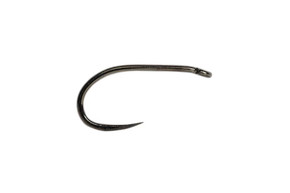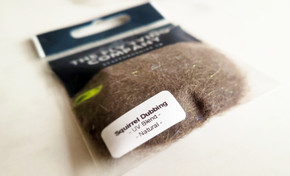Origin and History
The Peacock & Claret is a traditional UK wet fly pattern that has been a favourite among stillwater and river anglers for decades. The combination of natural peacock herl with a deep claret body creates a rich contrast that is highly attractive to trout. It is often fished as part of a team of wets on reservoirs, where it can represent buzzer pupae, small terrestrials, or simply act as an attractor pattern. Its enduring popularity comes from its versatility and the irresistible flash of peacock.
Materials
- Hook: Wet fly or nymph hook, sizes 10–14
- Thread: Claret or black 8/0
- Body: Claret seal’s fur or synthetic dubbing
- Rib: Fine oval gold or copper tinsel
- Thorax: Peacock herl
- Hackle: Claret hen hackle (soft and mobile)
Popular Variations
- Peacock & Claret Dabber – bushier hackle for loch-style drifting
- Beadhead Peacock & Claret – adds weight for stillwater use
- CDC Wing Peacock & Claret – with CDC wing for emerger imitation
- Palmered Peacock & Claret – hackle wrapped through the body for extra movement
- Mini Peacock & Claret – tied small (size 14–16) for pressured fish
Step-by-Step Tying Guide
- Start the thread behind the eye and lay a foundation to the hook bend.
- Tie in fine gold or copper ribbing at the bend.
- Dub a slim, tapered body of claret seal’s fur or substitute, leaving room for the thorax.
- Counter-wrap ribbing through the body for segmentation and durability.
- Tie in and wrap 2–3 turns of claret hen hackle behind the thorax area.
- Add a small thorax of peacock herl, creating contrast and natural flash.
- Build a neat thread head, whip finish, and apply varnish for security.
Seasonality & Representation
The Peacock & Claret is best used from spring through autumn, particularly on overcast or breezy days when trout are taking buzzer pupae or small emergers. Its peacock thorax provides a natural glint, while the claret body makes it stand out in coloured or peaty waters. It can be fished high in the water or deeper on an intermediate line depending on trout feeding behaviour.
Tackle and Setup
- Rod: 9–10ft, 5–7wt for stillwaters
- Line: Floating, midge tip, or intermediate
- Leader: 10–15ft fluorocarbon, 6–8lb breaking strain
- Setup: Fished singly or in a team of wets; excellent as a top or middle dropper
Summary Table
| Aspect | Details |
|---|---|
| Origin | Traditional UK wet fly |
| Best Seasons | Spring – Autumn |
| Represents | Buzzers, emergers, attractor |
| Hook Sizes | 10–14 |
| Tackle Setup | 9–10ft rod, floating/intermediate line, 10–15ft leader |












